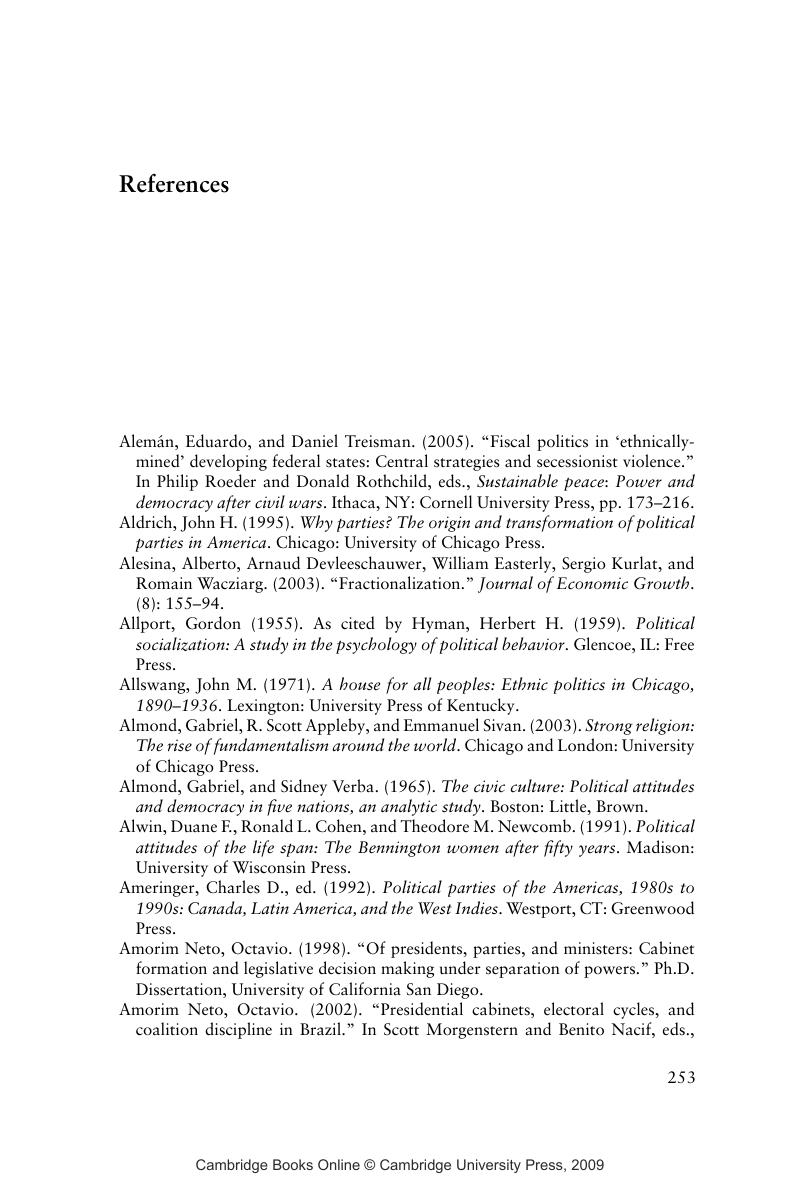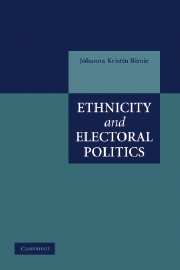Book contents
- Frontmatter
- Contents
- List of Tables and Figures
- Acknowledgments
- 1 Introduction: The Ethnic Effect
- 2 Ethnic Attractors
- 3 Ethnic Attractors and Exogenous Constraints
- 4 Ethnic Voting in Romania
- 5 Ethnic Voting and Party System Stability
- 6 Ethnic Politics and Access
- 7 The Ethnic Effect on Regime Stability
- 8 Conclusions
- Appendix A The Model (Formal Version)
- Appendix B Measurements and Other Methods Issues
- References
- Index
- References
References
Published online by Cambridge University Press: 03 December 2009
- Frontmatter
- Contents
- List of Tables and Figures
- Acknowledgments
- 1 Introduction: The Ethnic Effect
- 2 Ethnic Attractors
- 3 Ethnic Attractors and Exogenous Constraints
- 4 Ethnic Voting in Romania
- 5 Ethnic Voting and Party System Stability
- 6 Ethnic Politics and Access
- 7 The Ethnic Effect on Regime Stability
- 8 Conclusions
- Appendix A The Model (Formal Version)
- Appendix B Measurements and Other Methods Issues
- References
- Index
- References
Summary

- Type
- Chapter
- Information
- Ethnicity and Electoral Politics , pp. 253 - 272Publisher: Cambridge University PressPrint publication year: 2006



